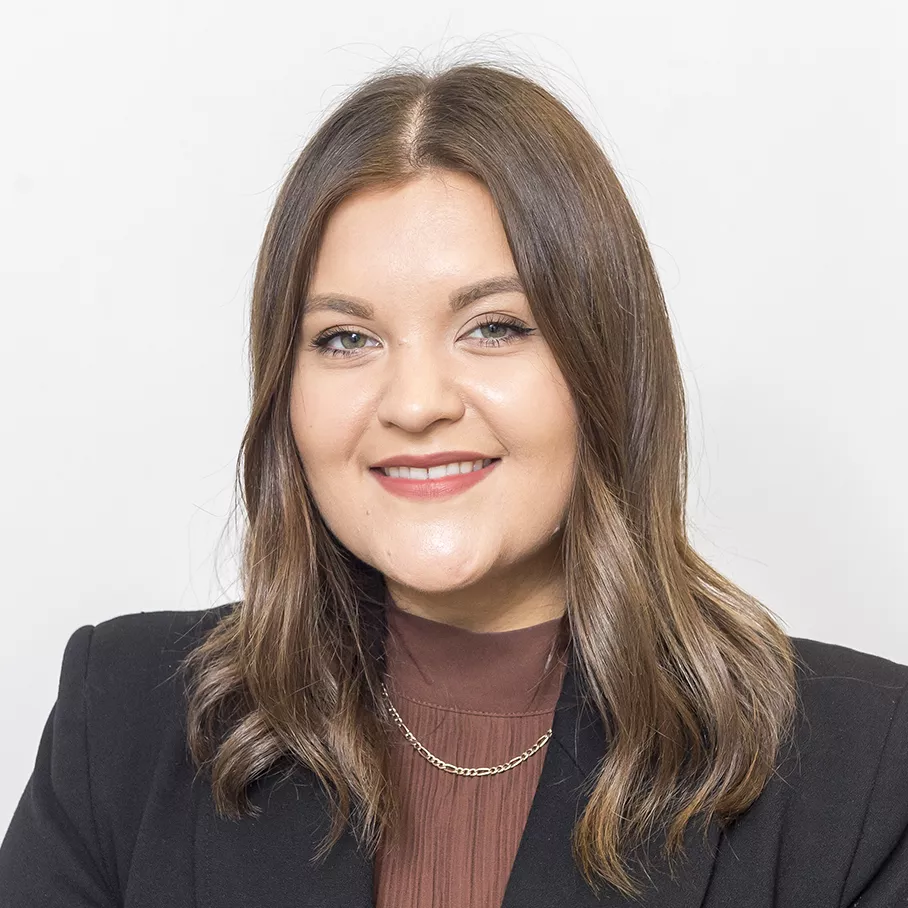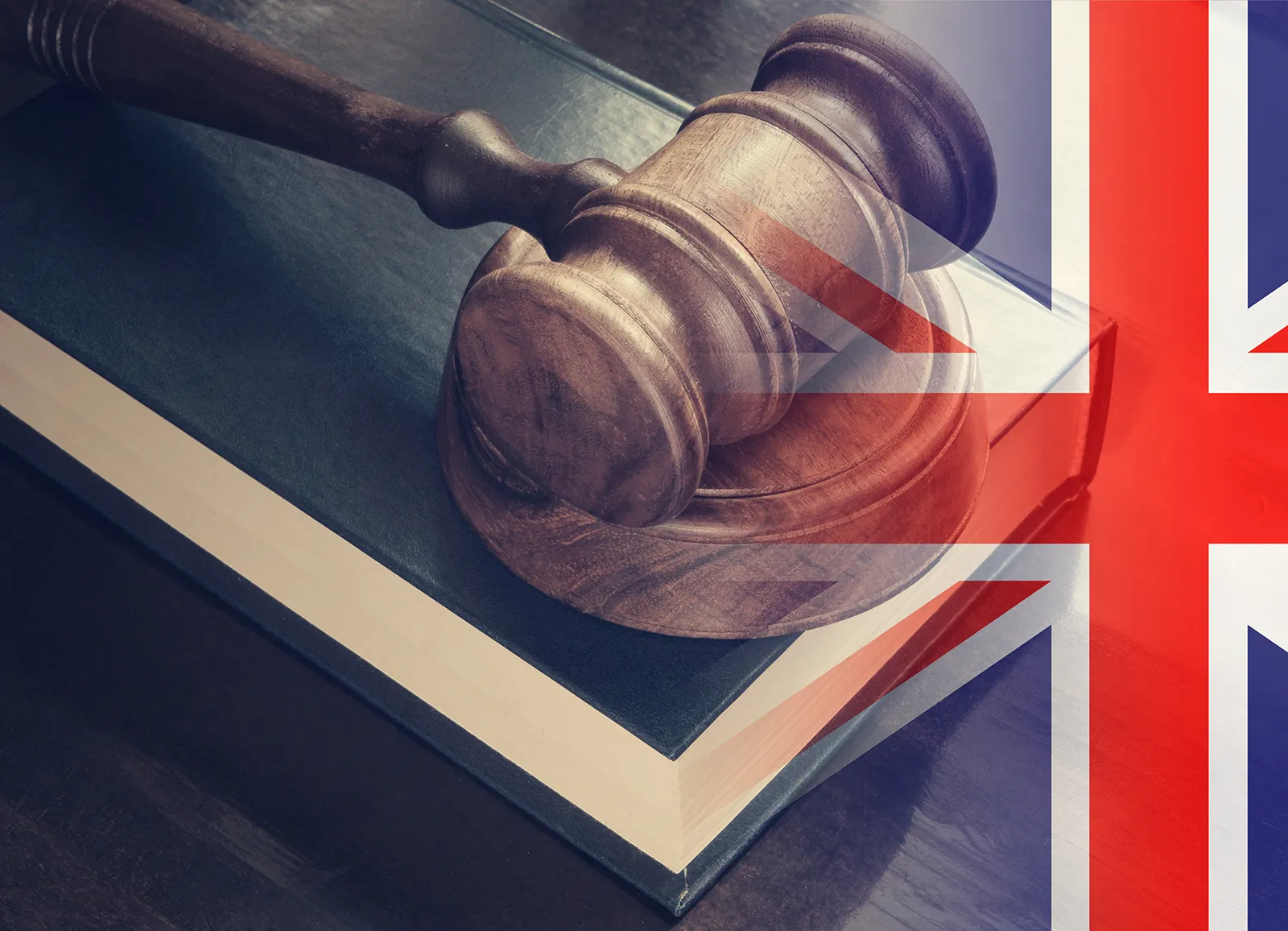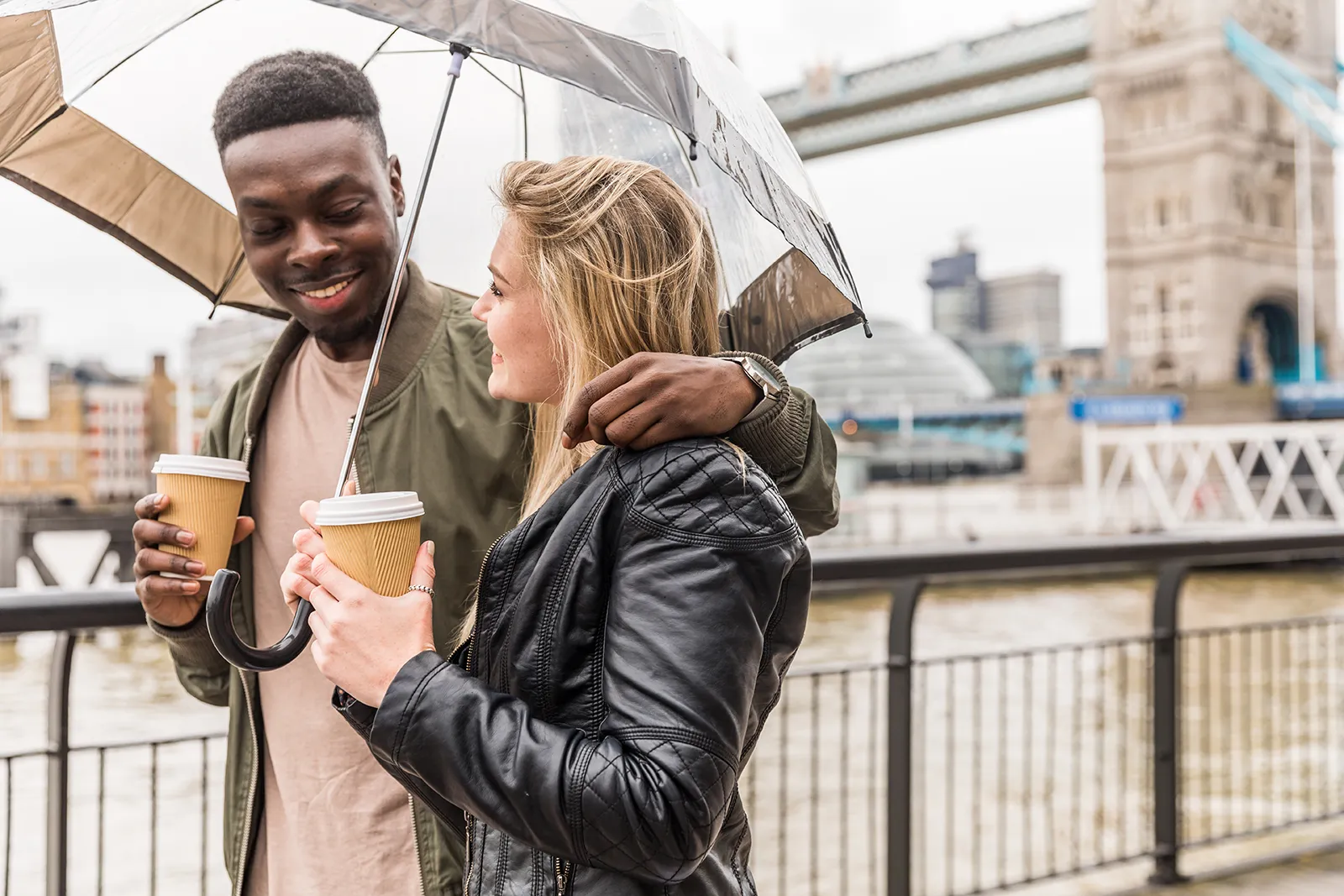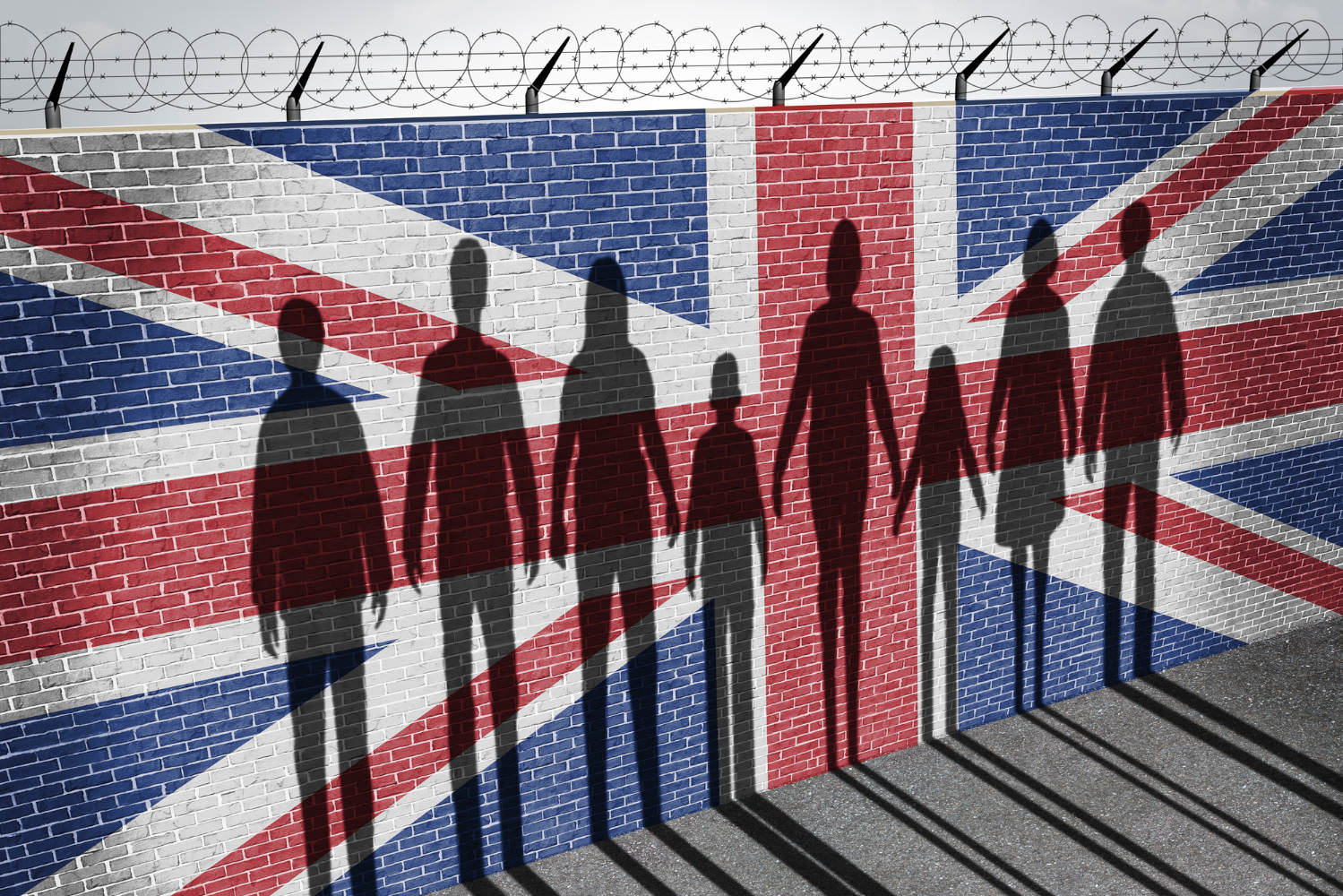Introduction
Making the decision to move from Canada to the UK to be with your spouse/partner is not always an easy one to make. There are a multitude of emotional and financial considerations, and a long, complicated immigration process to tackle before you can begin your new life together in the UK.
However, fret not, we are here to help! My position in writing this guide is unique: I am both a lawyer specialising in UK immigration law and someone who has had to personally navigate the entire Partner visa process myself (yes, fellow Canadian here, now happily residing and being a lawyer in the UK!), I know how you are feeling. This insider’s guide is here to walk you through the steps and what to expect throughout the process.
To tell you a bit about my own experience, I first moved to the UK in 2019 on a Tier 5 Youth Mobility Scheme Visa with my British partner, who had been living in Canada. In 2021, he proposed, and we got married that summer. We planned to apply for the spouse visa from within the UK before the expiry of my visa in July. Unfortunately, our plans were derailed when the legal advice we had received about the financial requirement was proven false. A solicitor that subsequently saved us from applying with the wrong information and from wasting thousands of pounds said that we ‘fell through the cracks of the system’. To make a long story short, it turned out that we had to wait for 6 months from September to even submit our application. By the time we received an approval, it had been a long, stressful 10 months of long-distance and I was ecstatic to return to my life in the UK.
I learned through my experience how valuable it is to have reliable legal advice, especially when tackling the financial requirement for the spouse visa. If you have any concerns or questions about the process and your eligibility, I urge you to reach out to us. We are here to help!
If you want an in-depth guide into the spouse visa application more generally, then our A Very Useful Spouse Visa Application Guide remains by far the most comprehensive guide out there. But here, we will focus in on what you need to know to make a successful spouse visa application outside the UK, from Canada specifically, as a national of Canada.
Eligibility
Sponsor Requirements
Both the sponsor and applicant must be 18 years of age or older.
The sponsor must fall into one of the following categories:
- British or Irish citizen,
- Be settled in the UK (through indefinite leave to remain, settled status or proof of permanent residence);
- Have pre-settled status, be from the EU, Switzerland, Norway, Iceland or Liechtenstein, and have arrived in the UK before 1 January 2021;
- Have refugee status or humanitarian protection in the UK; or,
- Be in the UK with a Turkish Businessperson or Turkish Worker visa.
Relationship requirement
While this type of visa is often referred to as a ‘spouse visa,’ you do not necessarily need to be married or in a civil partnership to be eligible. You need to meet one of the following three criteria:
- You are in a UK-recognised marriage or civil partnership;
- You are a fiancé, fiancée, or proposed civil partner with intention to marry or enter a civil partnership within 6 months of arriving in the UK; or
- You are unmarried partners, who have been in a relationship akin to marriage or civil partnership for at least 2 years.
If you fall into the second option in the list above, you are applying for a fiancé, fiancée or proposed civil partner visa. This lasts for 6 months, during which time you would get married or enter a civil partnership in the UK. Then, before the end of the 6 months, you would apply for a spouse visa.
TIP: As an alternative from the fiancé visa, you could apply for a Marriage Visitor Visa which also lasts 6 months. However, you would have to return to Canada to apply for a spouse visa, whereas with the fiancé visa, you can switch from the fiancé to spouse visa within the UK. The drawbacks of the fiancé visa are that it is expensive, and the requirements are stricter than they are for the marriage visitor visa.
KEY CHANGE: Revised definition of a ‘partner’
It’s important to note the definition of a ‘partner’ has been revised and it is seemingly more generous. It defines a partner as ‘an unmarried partner, where the couple have been in a relationship similar to marriage or civil partnership for at least 2 years’. There is no longer a requirement to evidence cohabitation in this 2-year period.
Although there is no need to evidence cohabitation, it is still essential to show the relationship was genuine and subsisting for the duration of the 2-year period and that it is still presently. To prove the relationship was and is genuine and subsisting may be evidentially tricky to demonstrate without cohabitation.
Additionally, there must be a good explanation as to why the partners are living separately. The Home Office uses an example where ‘the couple are currently living apart for work reasons in order to meet the financial requirements of the rules’, in this instance there is no requirement to evidence cohabitation as there is a good reason they live separately.
Financial requirement
The financial requirement is where things can get confusing and is a major cause of refusal. This is an element of the process where it is absolutely necessary to understand the requirements.
The tricky part is that you may meet the threshold required to meet this requirement, but not meet or evidence it in the ‘right’ way.
The sponsor must have an annual salary of at least £18,600, plus £3,800 for the first dependent child, and £2,400 for each dependent child thereafter.
Please see our spouse visa legal guide for more information on the financial requirement.
KEY CHANGE: The minimum salary threshold is increasing from 4th April 2024
Importantly, the minimum threshold set to increase dramatically, up to £38,700 from 4th April 2024. It is essential that anyone entering the Partner route from this date is aware of the new threshold.
English requirement
You do not need to prove your knowledge of English if you are a national of Canada. This is because the Home Office considers Canada to be a ‘majority English speaking country’.
Tuberculosis (TB) testing
Canadians are typically exempt from having to prove a negative test for TB. However, if you have visited or resided in a country on the list called Appendix T in the last 6 months, you will have to be tested at a clinic approved by the UK Home Office. Find out more here.
FAQs
As a Canadian citizen, do I have to apply from Canada?
You can apply from a country in which you have lawful residence. For example, if you are a Canadian currently living in the USA, you can apply from the USA.
This goes the same for someone who has lawful residence in Canada but is a national of another country.
You can apply from within the UK only if you have lawful residence, and your current visa is still valid when you apply for the spouse visa. So, for example, if you are in the UK on a valid Youth Mobility Scheme visa or a Skilled Worker visa, you can make your spouse visa application from the UK if you submit your application before your current visa expires.
You cannot apply from the UK as a visitor.
What is the terminology I need to know to understand the requirements and process?
Once you get through the partner visa process, it may feel like you have learnt a new language. There is a lot of Home Office lingo to wrap your head around at first. Let us go through the terms.
- Home Office: This is the UK’s government body responsible for immigration. This is the body to which your application will be submitted and that will make the decision.
- Partner: In the context of spouse visas, the Home Office uses the term ‘partner’ to mean spouses, civil partners, fiancé(e)s or proposed civil partners, or unmarried partners where the couple have been in a relationship akin to marriage or civil partnership for at least 2 years.
- Applicant: The non-UK national partner who is applying for permission to enter and reside in the UK.
- Sponsor: This is the UK national partner who is applying to sponsor their non-UK national partner to live with them in the UK.
- Dependent child: this is a child under 18 who is a non-UK national and requires sponsorship to reside in the UK. This will affect the financial requirement. Children who are UK nationals are not impacted by the visa process or application.
- ‘Marriage that is recognised in the UK’: for the Home Office to see a marriage or civil partnership as valid, it must be recognised by law in the country it took place.
- Leave to enter: If the applicant is applying for permission to enter the UK, the application is for leave to enter. This also known as entry clearance.
- Leave to remain: If the applicant is applying from within the UK, the application is for leave to remain.
- Appendix FM: This is the official guidance provided by the Home Office. This outlines all the requirements for a spouse visa application, including the financial requirement.
- Appendix FM-SE: This is another guidance from the Home Office. ‘SE’ means specified evidence, and the guidance outlines the documents and evidence that must be provided in the application.
- ‘Family Life’ Application: the partner visa may be referred to as a family life or family visa application.
- Settlement: while specifically meaning ‘indefinite leave to remain’ (which is what you will apply for after a partner visa, and extension of the partner visa), partner visas are also referred to as settlement as it is a type of visa that can allow you to apply for settlement.
- Biometrics: These are physical characteristics or biological measurements that are unique to everyone. This includes facial recognition, fingerprint mapping and retina scans. The UK Home Office collects fingerprint mapping information and photographs at your biometric appointment to assist in identification.
I would like to instruct a solicitor to help with my application. Can I find a solicitor in Canada to help?
No. An immigration lawyer in Canada would be qualified and familiarised with the Canadian immigration laws/system, but unlikely to be able to help you with a UK immigration application. You should find a solicitor in the UK to assist with your application.
Can I visit the UK while waiting for the decision on my application?
The answer to this question is determined by whether the visitor is a non-visa national or a visa national. A visa national is required to make a separate entry clearance application to visit the UK (i.e., a visitor visa application), and they are only allowed to have one application at a time, and a second application would essentially cancel the first application.
A non-visa national does not need to apply in advance, but simply must ask for permission to enter the UK at the border, which you do even if you enter through the e-gates.
Canadians are considered non-visa nationals for the purposes of visiting the UK. This means that we do not need to apply for a visitor visa (or, entry clearance) to visit the UK. Technically, it may be possible to enter the UK as a visitor while your spouse visa decision is pending.
However, this is not advisable. When you present yourself at the UK border, and ask for permission to enter as a visitor, you are declaring that as your intention. If you have already submitted a spouse visa application, you will have also declared that your intention is to settle permanently in the UK. You would be presenting conflicting intentions to the Home Office.
TIP: Even though Canadians do not require a formal visitor visa to enter the UK, you cannot apply for a spouse visa from within the UK if you are in the UK as a visitor.
How long will it take to get my visa?
Unfortunately, at the time of writing, things are taking longer than usual. At present, the Home Office is informing applicants that it could take up to 24 weeks (around 5.5 months) to receive a decision on an application from outside the UK.
In normal circumstances, there is an option at the application form stage to pay extra for the priority service. Unfortunately, priority and super priority visa services are currently suspended for any new family visa applications.
This wait can be extremely frustrating, especially in the circumstances that you are living away from your partner/spouse. Try to keep yourself busy during the wait.
When should my ‘working day’ countdown begin?
The Home Office has estimated time frames set out in working days (or, business days) for how long your application could take to process. You can begin counting these days from the date of your biometric appointment at VFS Global.
When can I contact the Home Office for an update on my application?
The Home Office has a paid-for service through which you can make an enquiry for information on your application. However, this has been proven repeatedly to receive generic responses with reminders of the estimated waiting times. In our experience, it is only worth using this service if you are past the estimated waiting period. If you decide to make a paid enquiry, you can do so here.
What is my most essential piece of advice after being through the process?
If you have any concerns about whether you and your partner meet any of the eligibility criteria, the biggest piece of advice is to speak to a legal professional long before your estimated application date. This may give you more time to consider your options in the case that you do not meet certain eligibility criteria, such as the financial requirement.
It may be a particularly good idea to seek legal advice if you are planning to meet the financial requirement in any combination of income types, self-employment income, or in a less ‘standard’ methods, such as with a student grant. Often, refusals can arise from not providing the right evidence for the financial requirement, and our team of legal professionals could help ensure you provide the right documentation to support your application.
If you do have concerns about your eligibility or your partner visa application, please contact our immigration team today.
If you are applying without legal representation, the applicant and sponsor may write a cover letter, especially if your case is less straightforward. This is the only opportunity to explain your application, your relationship, and any discrepancies your application may have.
You should ensure that the caseworker who reads your application can access the necessary information with ease. Aspects such as including a list of the supporting documents in your application will make it easier for the caseworker to locate any information they seek.
The Process
This guide is for Canadians who are applying for a spouse visa outside the UK. You can only apply from within the UK if you are already living in the UK with leave to enter or remain.
Preparation
The preparation for the application is a crucial part of the process. It is essential to research and understand the process, and the eligibility requirements before completing the application form or compiling your supporting documents. If you have any doubt about eligibility, or feel that your application is not straightforward, we highly recommend that you speak to a legal professional about your circumstances.
TIP – 28-day rule: It is also advisable to collect any non-financial supporting documents and evidence in advance to avoid scrambling in the final stages. However, please be aware that any documents you submit as evidence of the financial requirement must be dated within 28 days of the date you submit your application. This is the day that the application form is submitted.
Application form
You will be completing the online application form found on the UK government website. If you have done your preparation, this part should be rather straightforward.
It is helpful to have all the necessary information at your disposal when you begin the form, although you can save and return to the form at a later point if necessary. Some more tricky information that you may need to find to complete the form includes, but is not limited to:
- The applicant’s parents’ date of birth, country of nationality, and any other nationality (if applicable);
- Details of all the applicant’s visits to the UK in the last 10 years;
- Details of all the applicant’s visits outside of Canada for the last 10 years;
- Contact information and address for both sponsor and applicant;
- National Insurance number of both sponsor and applicant (if the applicant has previously lived in the UK);
- Passport information and number for sponsor and applicant;
- Employment details for sponsor;
- Details on shared financial responsibilities, when you last saw each other, how often you meet in person, why do you not live with your partner, details on where you previously lived with your partner (if applicable);
- Details of any past medical treatment for applicant whilst in the UK;
- Details on applicant’s current living arrangements in Canada.
When you submit the application form, the next stage is to complete all payments. This includes the application fee, and the IHS fee. Usually, if you were opting into priority, you would pay this fee at this point. However, this service is currently suspended for family visas.
Biometrics appointment
The biometric appointment is organised by a private company called VFS Global, whose services are outsourced by the Home Office. The appointment is where you provide your biometrics (i.e., scans of your fingerprints and ID photo are taken), and where you can provide your supporting documents if you opt out of the self-upload option.
Attending this appointment can be a challenge and another cost to consider, especially if you do not live in Toronto, Ottawa, Edmonton, or Vancouver. There are limited appointments available in Halifax and St. John’s once a month. Unfortunately, if you live elsewhere in Canada, you will have to travel to one of these VFS Global visa application centres.
After you submit your application form and pay the IHS surcharge and application fee on the Government website, you will find a link to register for an account with VFS. You can book a free appointment, but some of the appointments will have an extra fee.
TIP: Whilst VFS Global is the biometric appointment provider used by the Home Office in many countries, there are discrepancies in the process depending on the country you are applying from. The following information only represents the VFS process in Canada and may differ if you are applying from elsewhere.
What are the additional services offered by VFS?
When you are booking your appointment with VFS Global, you will be given a list of options to ‘add-on’ to your package. Many of these options can be extremely costly and of limited use. The options depend on which visa application centre you attend, with the centre in Toronto offering the most add-ons.
Personal Experience: I can see the value in the ‘Courier Service’ (in the case that you had to travel for your appointment, so that you don’t have to travel back to the visa application centre to collect your passport and documents) and ‘Keep my Passport While Applying’ options (if you are planning on traveling to countries other than the UK or Republic of Ireland whilst waiting for a decision).
What are the various ways I can submit my supporting documents?
There are three ways you can choose to submit your supporting documents for your application.
TIP: Regardless of which of the following options you choose, the applicant will need to attend a physical biometric appointment to provide the physical copy of the applicant’s passport, and fingerprints/photographs.
Self-upload on the VFS website.
To use this option, you will need digital copies of all your supporting documents to upload on their website after booking your appointment. The website is relatively straightforward but uploading can be tedious due to file size limitations and the system timing out.
TIP: Have your documents ready to upload (saved as PDFs, organised, labelled, and compressed) before starting to facilitate the process.
Purchasing the add-on ‘Document Scanning Assistance’ for $40 USD.
If you choose this option, you must bring physical copies of all your supporting documents to your appointment at VFS. This includes a photocopy version of each page of the applicant’s passport. They will ask for the documents by topic. To make the appointment easier for you, it is best to divide your documents into the following sections:
- Accommodation
- Consent Letters and Proof of Relationship
- Financial Evidence
- Sponsor’s Evidence
- Other
For an extra fee, if your sponsor, agent, or representative is based in the UK, they can submit your supporting documents on your behalf. This can be done by mailing the documents to the Birmingham Scanning Hub or by delivering the documents in person to the Scanning Hub or VFS offices in London or Edinburgh.
TIP: We advise our clients to use the self-upload option for submitting their supporting documents. This way, you have control over how the documents are organised and can ensure that nothing is missing.
Uploading your documents to the VFS portal is part of our Full Representation service if you instruct us to assist with your spouse visa application. If this is something you are interested in, please contact us.
Any other tips for attending the biometric appointment?
The biometric appointment may seem intimidating. The best piece of advice is to arrive at your appointment completely prepared. If you are using the self-upload option for your supporting documents, ensure that all your documents are uploaded before the appointment. If you have decided to add the ‘Document Scanning Assistance’, print, and arrange your supporting documents by category as outlined above so that they are ready to be scanned by the VFS officer. Regardless of which method you choose, the applicant must bring their physical passport and a printed unsigned copy of the UKVI Document Checklist to the appointment (you can download this checklist after submitting your online application). You will usually be asked to sign this checklist during the appointment.
TIP: The staff at VFS are prohibited from providing any advice on the visa application or on the supporting documents. Do not enter the appointment thinking the staff will help you to better your application. The role of VFS in the process is simply to collect your biometrics and your supporting documents and then pass this to the Home Office.
What happens after my appointment?
Let the wait commence! At this point, you have done all you can to ensure the success of your application. Once a decision has been made, you will be contacted to collect your passport and decision letter at the VFS centre.
Otherwise, there won’t be any contact from the Home Office or VFS Global other than one email a few business days after your appointment. This email will inform you that VFS has sent your application details and documents to the Home Office.
TIP: The ‘Keep my Passport’ and ‘Courier Service’ add-ons will impact the final steps in the process.
If you have purchased the courier service, your passport will be sent to your chosen address by courier. At your appointment, you would have received a copy of the shipping label. There is a tracking number on this, which will only activate once the decision has been made and the passport is being returned to you. This does not allow you to track the decision-making process.
If you purchased the ‘Keep my Passport’ service, you will have to return to the VFS centre after a decision has been made with your passport to have your entry clearance sticker added to your passport.
If you are approved
First of all, congratulations!
As of 10 October 2022, your decision will arrive in an email.
You will then receive information about the next steps, which would depend on if you chose any ‘add-on’ services at your biometric appointment. You may receive your documents by delivery (courier service), you may be prompted to bring your passport back to the VFS centre (‘keep my passport’ service), or you may be prompted to collect your documents from the VFS centre.
Your passport will have an entry vignette sticker on one of the pages. Refer to this for the date of validity for your entry clearance. In other words, the date from which you can enter the UK to the final date by which you must have entered the UK.
You will collect your Biometric Residence Permit (BRP) card within 10 days of entering the UK, or before your UK entry vignette in your passport expires – whichever is later. You will have chosen the pick-up location when completing the application form.
TIP: Your BRP will have an expiry date of 31 December 2024, even if this is not when your leave ends. To learn more about this, please read this article.
Questions
How can we help?
At Truth Legal we create regular blogs and detailed guides to help individuals understand the complex requirements and processes for visa applications. We hope these will help you if you are going it alone.
However, given the high visa and NHS fees, the lengthy waiting times, and the general high stakes involved with relocating to another country, you might just want us to manage the application for you.
We offer a variety of services tailored to your needs. Our two main services are:
Detailed consultation and case review
This involves taking detailed instructions (in person/phone/video con) then providing tailored, detailed written advice. Our letter will include a document checklist and we will fully explain the application process.
Document checking service
This involves everything as outlined above in ‘detailed consultation and case review’, plus we will review your application form, supporting documents in full and carry out a full ‘evidence check’. It will then be over to you to submit the application and upload your documents.
Full representation in the application
Full representation is the most comprehensive service and involves an initial consultation and case review followed by us fully preparing your application and doing any further work up until you get a decision on your application.
Full representation includes:
- Initial consultation and case review
- reviewing all supporting documents
- setting up the online form and reviewing prior to submission
- Drafting a detailed letter of representations
- Assisting with the submission of the application itself
- Guiding you through the submission of supporting documents.
- Going ‘on record’ with the Home Office so that all communication comes through us
You may pay for the costs of the initial consultation, before deciding whether to proceed with the full representation service (with the fee for the initial consultation being deductible from the Full Representation fee).
Our fees
Our fees are considerably cheaper than most city law firms. We usually offer fixed fees, so you know exactly what you are paying. Unlike many UK organisations providing immigration services, we are regulated by the Solicitors Regulation Authority.
We are often happy to have a free, no-obligation initial discussion to check whether your proposed spouse or Partner visa application is likely to succeed. We can then give you a tailored quote.
Our team is led by Louis MacWilliam. Louis is an immigration solicitor and has specialised exclusively in immigration for the past 12 years. He also lectures immigration law part-time and is a leading immigration expert.
Contact us
At Truth Legal we have a team of legal experts ready to help you with your questions and concerns for making a spouse visa application from Canada to the UK. To get in touch, please complete the form below on this page to send an enquiry or call us now on 01423 393 654.
More Legal Guides
Comprehensive and free legal guides from Truth Legal Solicitors.












